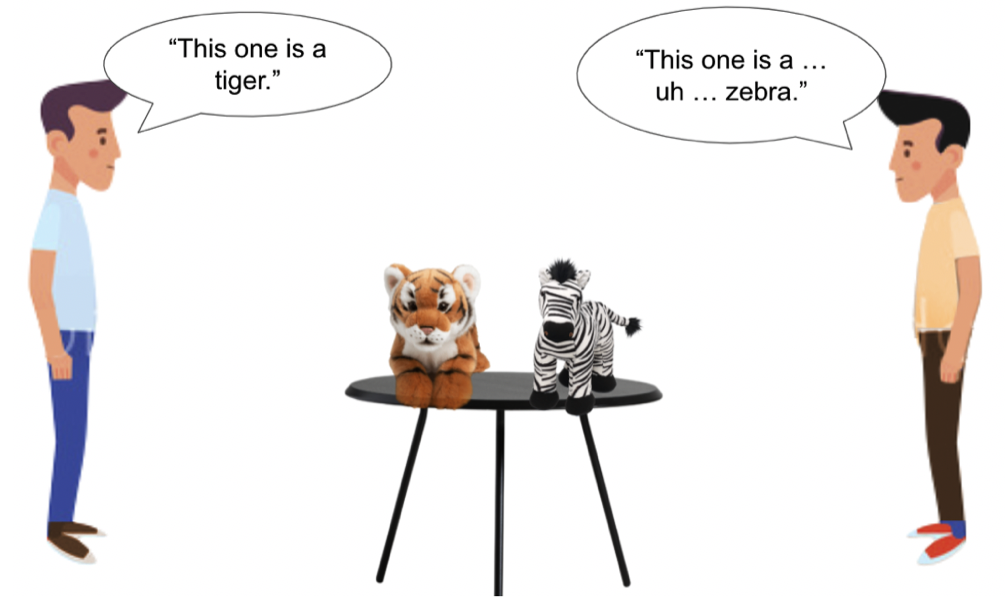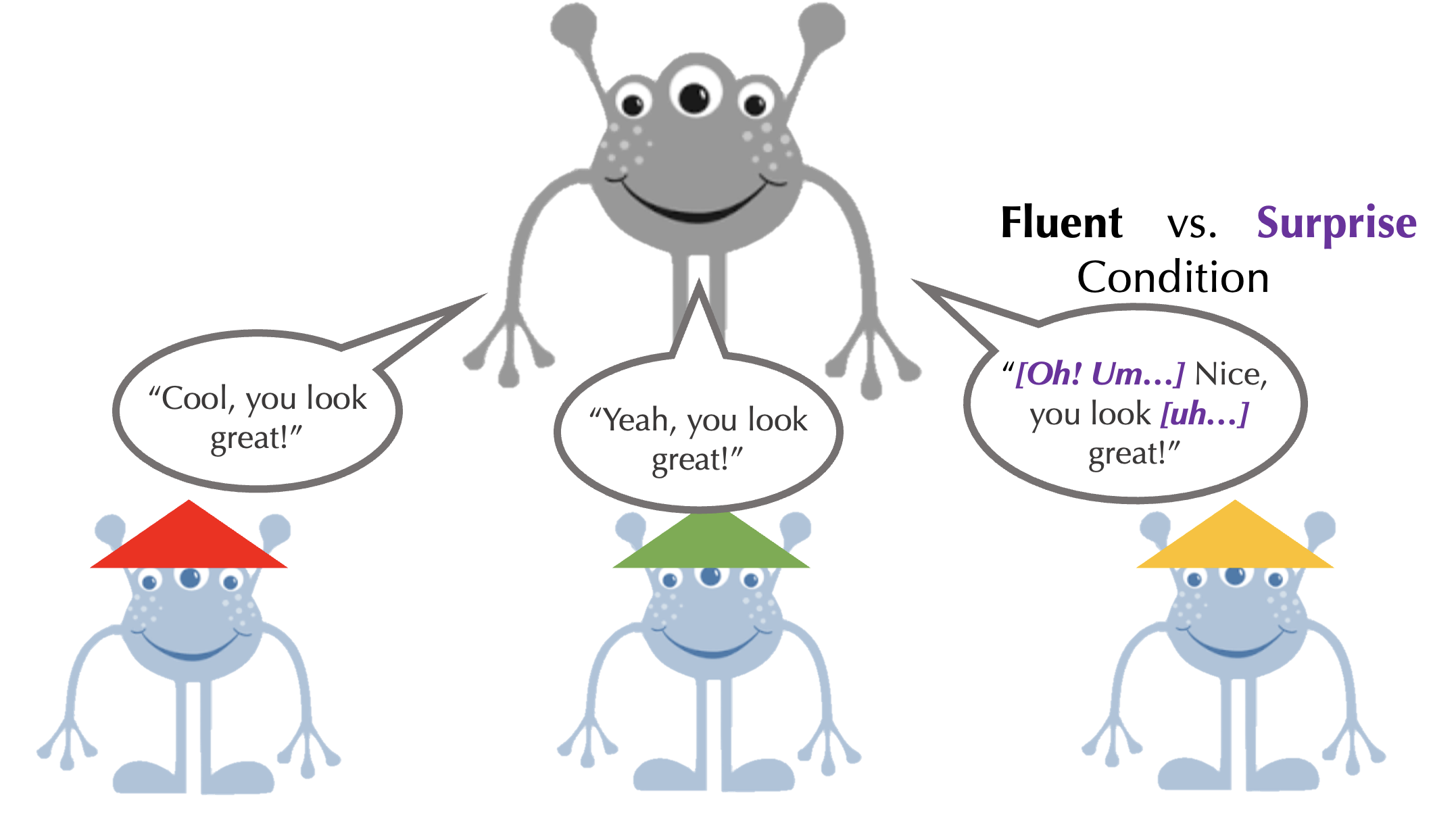Inferring Mental States from Disfluencies
Delays and disfluencies (“um”) are ubiquitous in everyday conversation and often signal rich information about what’s going on inside a speaker’s mind. How—and how quickly—something is said can be as meaningful as what is said. In this line of work, I investigate how children (and adults) use disfluencies to infer a speaker’s underlying mental processes. My research explores how children use these cues to reason about just how much someone knows and what their true underlying feelings are. In this work, I argue that children’s reasoning about delays and disfluencies is inferential (vs. heuristic), broad (vs. limited), and flexible (vs. fixed).

 Imagine a young boy expressing a gender counter-stereotypical preference (e.g., wanting to buy a Barbie doll) and his caregiver provides a permissive, gender egalitarian response. However, imagine that response comes slowly, with markers of surprise and production difficulty (e.g., “Oh! Um. . . Sure”). What message does that young boy really receive?
Imagine a young boy expressing a gender counter-stereotypical preference (e.g., wanting to buy a Barbie doll) and his caregiver provides a permissive, gender egalitarian response. However, imagine that response comes slowly, with markers of surprise and production difficulty (e.g., “Oh! Um. . . Sure”). What message does that young boy really receive? 